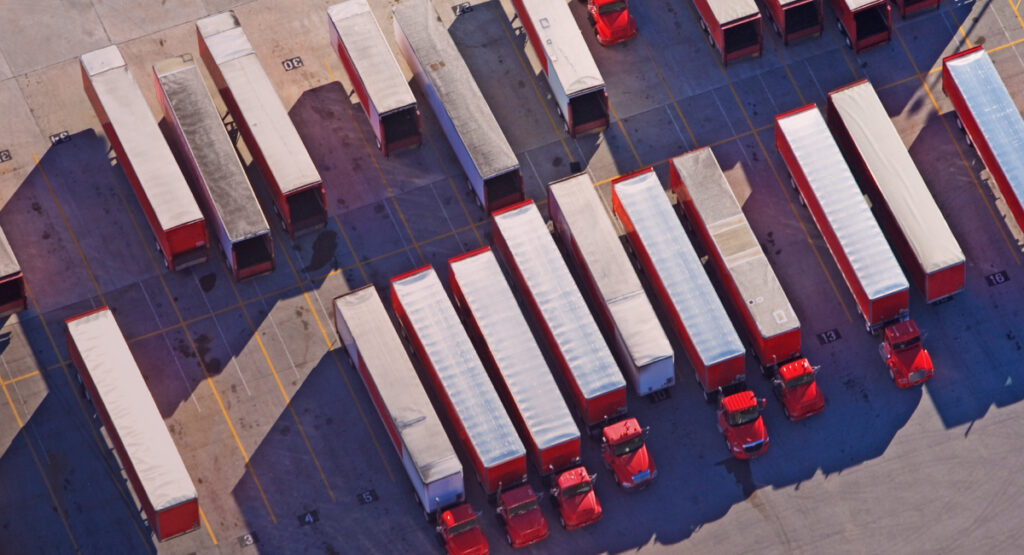
Table of Contents:
In the logistics and freight transportation industry, there are a lot of options to choose from when it comes to how exactly you'll get your cargo where it needs to be. You can go with temperature-controlled trailers, open-air flatbed trucks, or dry van trucks.
Choosing between one or the other can be difficult if you don't know what differentiates them or their pros and cons. We believe an informed individual makes the best decisions, so we'll share all you need to know about Dry Van Trucks in this guide.
A dry van truck or trailer is a closed box trailer attached to a semi-truck. They are the most common and popular shipping method you see because of how they keep the goods "dry" and protected from external elements like the sun, rain, or snow. In many ways, it's like a giant closed box on wheels.
Dry van trucks are not temperature-controlled and are best for hauling dry cargo, like household goods and non-perishables. They are also excellent for eCommerce shipping due to their cost-effectiveness and plentiful space.
Dry Van trailers can be used for both full truckload and less-than-truckload (LTL) freight shipments, and they can haul up to 45,000 lbs. Some common types of freight for dry van trucks are:
Dry Van has always been a popular shipping option, as it offers many advantages. But it doesn't come without its own set of disadvantages. If you are considering going with dry van freight transportation, you should consider the following pros and cons:
If you have a small or medium-sized business, LTL shipments can do wonders for you. Foremost, this dry van truck shipping option allows you to save more money by delivering your goods in bulk sets (pallets) to strategic locations (distribution sites).
This approach allows you to save a significant amount of money compared to parcel delivery or shipping your items directly from your establishment to your customer. LTL shipment also allows you to stream your goods continuously, allowing a steady supply in your distribution outlets.
Although FTL saves you the most money, not every business is prepared to charter an entire truck. Small businesses forcing themselves to opt for FTL to save money may create supply shortages, making it an impractical approach.
One of the best things about dry van truck shipment is the consistent and fair pricing. The National Motor Freight Traffic Association publishes standard freight class codes and updates every three or four months.
The National Motor Freight Classification (NMFC) codes help everyone in the logistics industry identify and quote shipments correctly. It also gives you an accurate estimate of how much you're going to spend. See the table below (the higher the class number, the higher the cost):
| Class | Commodity Example | Weight Range per Cubic Foot |
| 50 | Clean freight (bulk ingredients) | 50+ lbs. |
| 55 | Bricks | 35-50 lbs. |
| 60 | Car accessories & car parts | 30-35 lbs. |
| 65 | Bottled beverages | 22.5-30lbs. |
| 70 | Automobile engines | 15-22.5 lbs. |
| 77.5 | Tires | 13.5-15 lbs. |
| 85 | Crated machinery | 12-13.5 lbs. |
| 92.5 | Computers | 10.5-12 lbs. |
| 100 | Boat covers | 9-10.5 lbs. |
| 110 | Cabinets | 8-9 lbs. |
| 125 | Small household appliances | 7-8 lbs. |
| 150 | Auto sheet metal parts | 6-7 lbs. |
| 175 | Stuffed furniture | 5-6 |
| 200 | Aircraft parts | 4-5 lbs. |
| 250 | Bamboo furniture | 3-4 lbs. |
| 300 | Wooden cabinets | 2-3 lbs. |
| 400 | Deer antlers | 1-2 lbs. |
| 500 | Bags of gold dust | Less than 1 lbs. |
Dry van trucks are perfect for all sorts of cargo. That's why most established companies have their own logistics department with fleets of dry van trucks – they're flexible, reliable, and incredibly cost-efficient.
If you're a small or medium-sized business, however, there's no need to worry. You don't have to spend millions on owning a fleet. You can have your cargo delivered to wherever you need anywhere in the US through Michigan's top logistics company, Surus.
We offer competitive rates, a streamlined process, and experienced personnel. Contact us today.